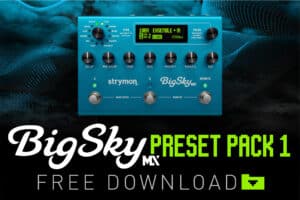
BigSky MX Preset Pack 1
Explore Our First BigSky MX Preset Pack! As part of the latest Nixie 2 update, we’ve put together a free BigSky MX preset pack featuring sounds
Free US Shipping On Orders Over $49
Easy 30-Day Returns
Financing Available Through ![]()
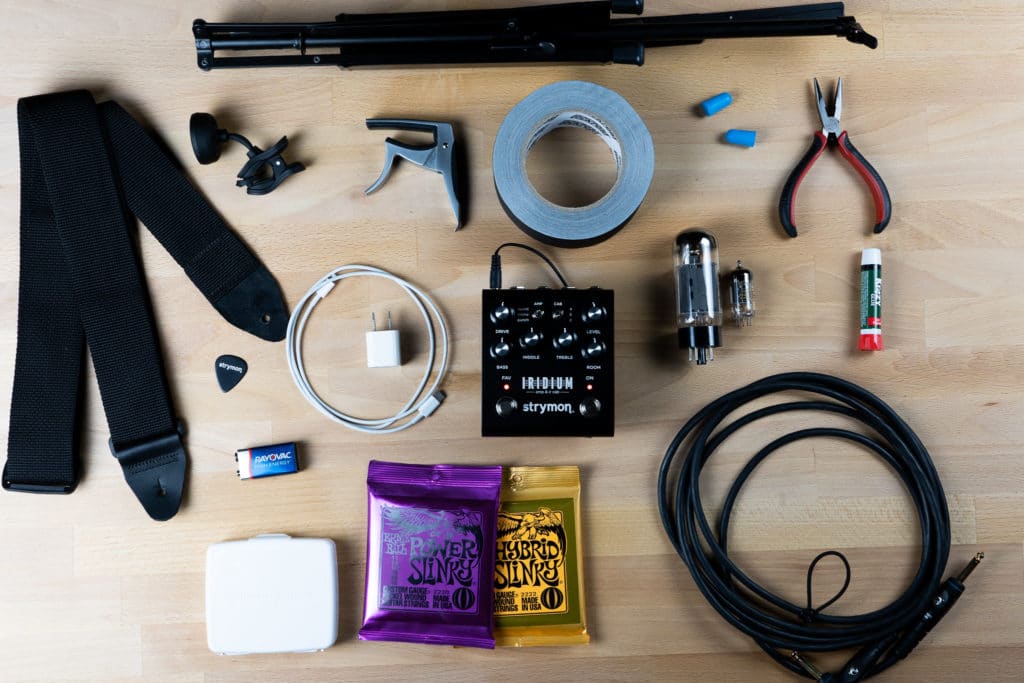
So you’ve got your guitar, amp, pedalboard and all the necessary cables — but what else should you bring to a gig? While you certainly wouldn’t get far without your guitar stuff, we thought we’d share some pro tips on some additional items you might want to bring the next time you play out.
The stuff on this list could potentially prevent a bad gig from becoming a train wreck, take a good gig and make it great, or even save your life! And the good news is none of this requires that you hire a roadie — all of these suggestions are easy and small enough to fit in your gig bag, the back of your amp, or a small backpack.
For a list like this you need an old pers…I mean, um, an experienced player, so please welcome Sean Halley, our Head of Marketing! He spent much of his early career as a full-time live and session guitarist, so I’ll let him take it from here.

Hi everyone, Sean here – as you might imagine, playing some 280+ gigs a year while maintaining a busy session career gave me a ton of experience in the perils of playing guitar for a living (both onstage and in the studio). Some of the stuff on this list has saved me major headaches, and some of it has saved the gig itself, when someone else on stage needed the help instead of myself. Without further ado, please enjoy the following list of “20 Things to Bring to a Gig Besides Your Guitar and Amp.”
1. Super Glue – The cyanoacrylate clear stuff. There are all sorts of uses for Superglue on a gig, not the least of which is closing a cut or wound on a playing finger (Flea and Mark King will vouch for me on this) so you can make it to the end of the gig without your guitar looking like Michael Myers got hold of it.
2. Wooden Toothpicks – The screws holding your guitar’s strap buttons handle a lot of flexing and jostling about, and they strip out more often than you’d think. If that happens to you, push a couple of toothpicks into the hole and snap them off, and then re-screw in the strap button (it’s wood-to-wood contact for the screw, so it works great). For extra insurance, drip some of your Superglue into the hole before you screw the button back on.
3. Medical Kit – I’m not suggesting that you carry enough supplies to suture your own wounds like Patrick Swayze did in Roadhouse, but it’s good to have some Tylenol/Paracetamol/Advil around, as live music can be loud and gear can be heavy. Antihistamines might not be a bad idea either – an allergic reaction can stuff you up enough to make singing difficult (if that’s part of your gig duties), and the “cleaning regimen” at some bars I’ve played in over the years leaves a TON to be desired.
4. A Tuner – Really. If you don’t have one on your pedalboard, get one of the units that clip to the headstock of your instrument. Everyone will thank you, and you’ll enjoy the gig more.
5. Extra Set of Power Tubes – If you’re using a tube amp live, having an extra set of power tubes just might save your bacon. I remember dropping my old 100-watt Guytron head down a short flight of stairs on my very first gig after moving to LA, cracking an EL34. Having an extra pair of tubes in the truck meant that I didn’t have to use the beat up JC120 backline amp, which looked like it had been dragged behind a truck for a couple of years before being untowardly assaulted by a militant pack of coyotes (and probably sounded like it as well).
6. Vice-Grips and Needle Nose Pliers – You never know when you might need to extract something from a tight space, hold up a drooping mic stand – or more commonly – hold your drummer’s high tom in place when the ancient bracket holding it breaks.
7. Roll of Black Cloth Duct Tape – AKA gaff tape. There may be times when you have to black out the logo on a speaker cab or amp for a visiting camera crew, or secure a run of cables on the stage so that you don’t trip over them and break your face.
8. Small Roll of Velcro – Sometimes you just need to stick something to something else securely, and soft velcro makes it quick and easy. However, it’s not recommended for getting back at the bass player for detuning your guitars on the break, especially if one or both of you has hairy arms. It’s everyone’s job to think about workplace safety, People!
9. Fuses – If you use a tube amp, you should have some backup fuses. There have been a number of times over the years where bad or faulty wiring in a venue has taken me down, and you’re going to need to replace the fuses that blew once you solve the problem.
10. Hand Truck/Dolly – Having a small foldable hand truck around is a complete lifesaver. Your back will thank you as you get older, and your gear will look nicer because it’s less likely to get jammed into walls and doors on the way to the stage. In addition, having an assortment of bungee cords on hand can help keep items from falling off that hand truck when you hit a bump or round a corner. Okay, this one might not fit in your gig bag, but there are plenty of options small enough to leave in the back of your car.
11. Extra Cables and Accessories – Having an extra IEC power cable, power strip, extension cord and guitar cable around (not to mention picks, slides, and capos) can really save your butt, and sometimes it’s not in the way that you expect. I forgot a strap once for a big band gig where I was required to stand, and had to tie two knots in my extra guitar cable and use that instead. Playing for three hours basically crippled my neck and shoulder, and I do NOT suggest you try that one at home. Saying that, if you do try it, please send us video!
12. Extra Strap – You could almost say “see above,” but the reality is that I keep stuff for so long that I often forget the true age of things (Exhibit A: I’m currently wearing a pair of Doc Martins I bought in 1993). I’ve had the leather bits on straps just fall apart because they were so old, so it’s always good to have a backup strap in a gig bag pocket somewhere.
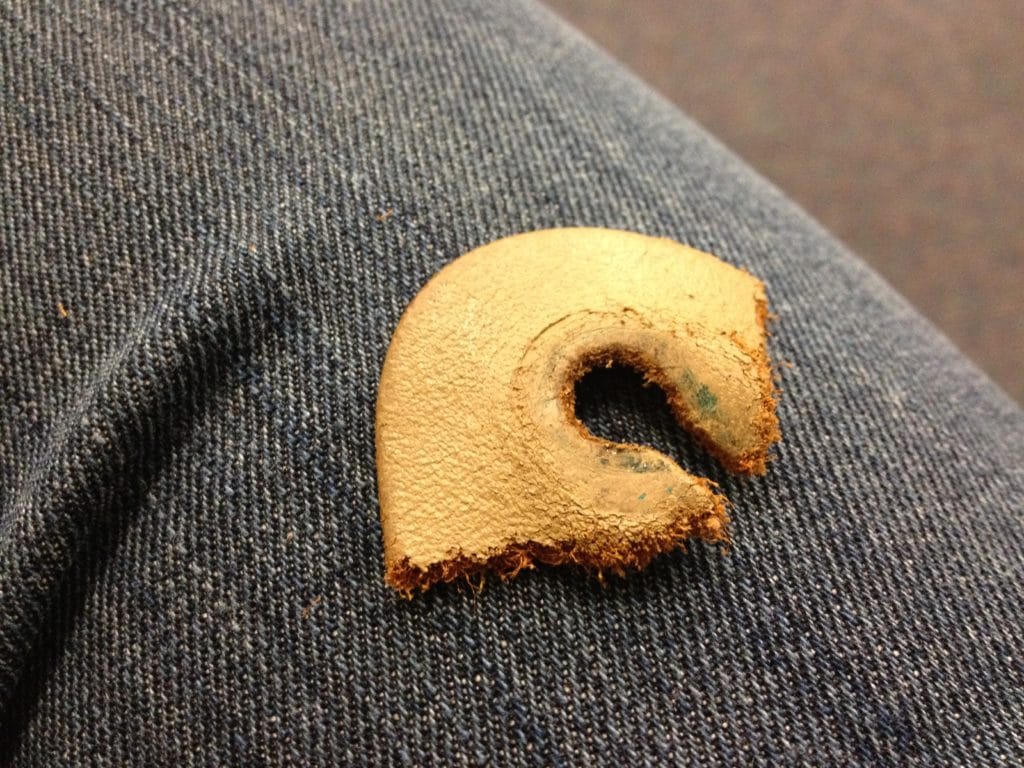
13. Extra Strings – Just bring them for every instrument you plan on playing. Sometimes a string breaks, and sometimes you need to press a tiny recessed button somewhere to reset a digital device and a plain G-string is all you have available.
14. Flashlight – Stages and clubs can be dark, and you WILL need one at some point when you can’t find your phone and you’ve dropped a pick, can’t see the value of an important knob, or need to ward off an inebriated attacker who is super unhappy with your solo on “Achy Breaky Heart.”
15. Music Stand – Even if you don’t need to read a chart on the gig, just having a stand in the car can help. Over the years I’ve used them to hold a replacement wireless receiver, a video monitor for the drummer, and countless other things when a positionable flat surface was needed. You can use your Vice-Grips to tighten the joint and keep it level.
16. Batteries – There may be times when you really need one for a pedal, wireless transmitter, stand light, etc.
17. Guitar Stand – These days you can get guitar stands that fold up as small as a book, so don’t be the person who leans their guitar up against the speaker cab on breaks! Put it on a stand so that it doesn’t fall over while you’re hitting the loo, if only so that you’ll have someone else to blame when it happens anyway.
18. Extra Amp – Back in the day this was really hard to do, but it’s never been easier. If you don’t have an Iridium on your board already, keep one in the pocket of your gig bag — it may literally save the day.
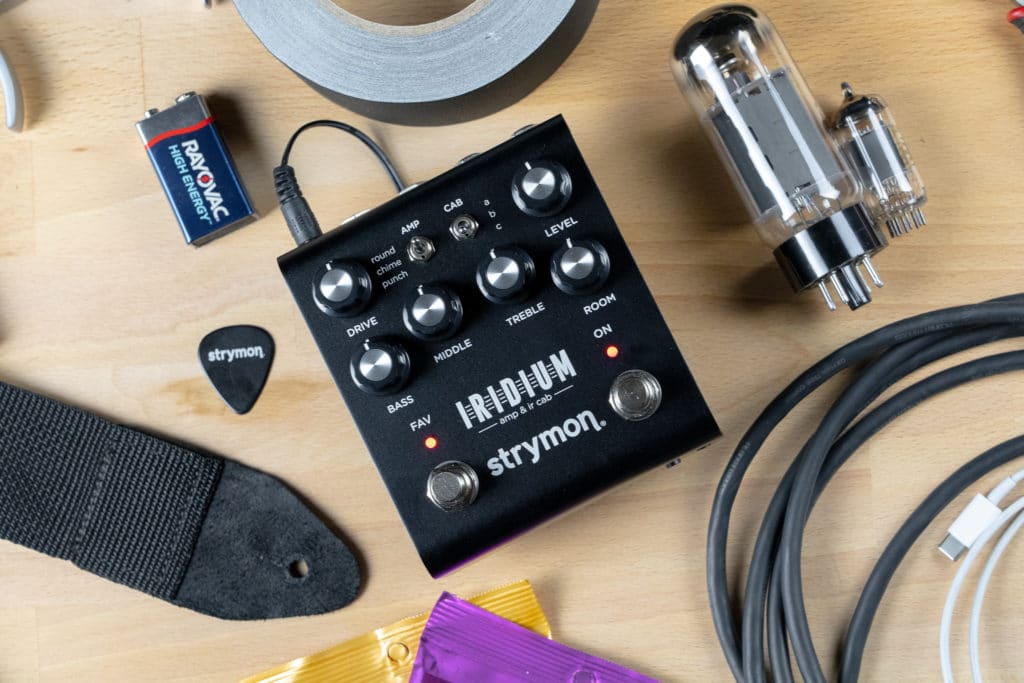
19. DI Box – Especially on smaller gigs, when you never know what someone in the band (probably the bass player) is going to need at some point. The bass player I played with a ton in my mid-twenties always had problems with his SuperAwful™ bass amp, and he ended up using my DI to go direct to the PA more times than I can remember.
20. Hearing Protection – I didn’t pay enough attention to this when I was younger and standing next to the China cymbal six nights a week, and it took many years of NOT playing live for my hearing to come back properly. If you can only get the squeezy foam earplugs, that’s better than nothing, but consider investing in a good pair — either custom fit or one of the more universal designs — the clear ones that retain clarity in high frequencies and just sound “turned down” instead of muffled. You’ll enjoy the gig more, and with a flatter frequency response, you’ll probably play and sing better as well.
21. Phone Charger (extra credit) – If you’re in a situation where you’ve got pockets for this kind of stuff, always have a charger and cable for your phone in your gig bag. The way home after a gig often involves deserted roads late at night, and it’s always a good idea to make sure your phone has power before setting off.
We hope this list helps you be extra-prepared for your next gig (and gave you a chuckle or made you shudder from an awful gig memory of your own), whether it’s your first open mic night or your next world tour. We’ve all heard the phrase “an ounce of prevention is worth a pound of cure,” and that couldn’t be truer when it comes to gigging! Safe travels and break a leg out there.
Subscribe to our newsletter to be the first to hear about new Strymon products, artist features, and behind the scenes content!

Explore Our First BigSky MX Preset Pack! As part of the latest Nixie 2 update, we’ve put together a free BigSky MX preset pack featuring sounds
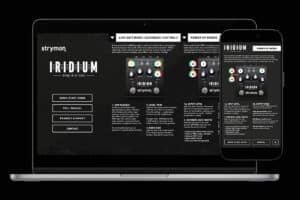
If you happen to be one of those Strymon owners who know that their favorite units might have some extra capabilities but can’t remember exactly
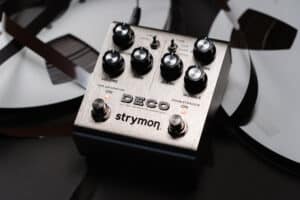
From our favorite artists’ new releases to amazing concerts, and existing artists we’re just finding out about, 2024 was a year filled with great music.
One Response
This is a great list of items and accessories every player will need for a gig. I have issues if I don’t have extra batteries with me.